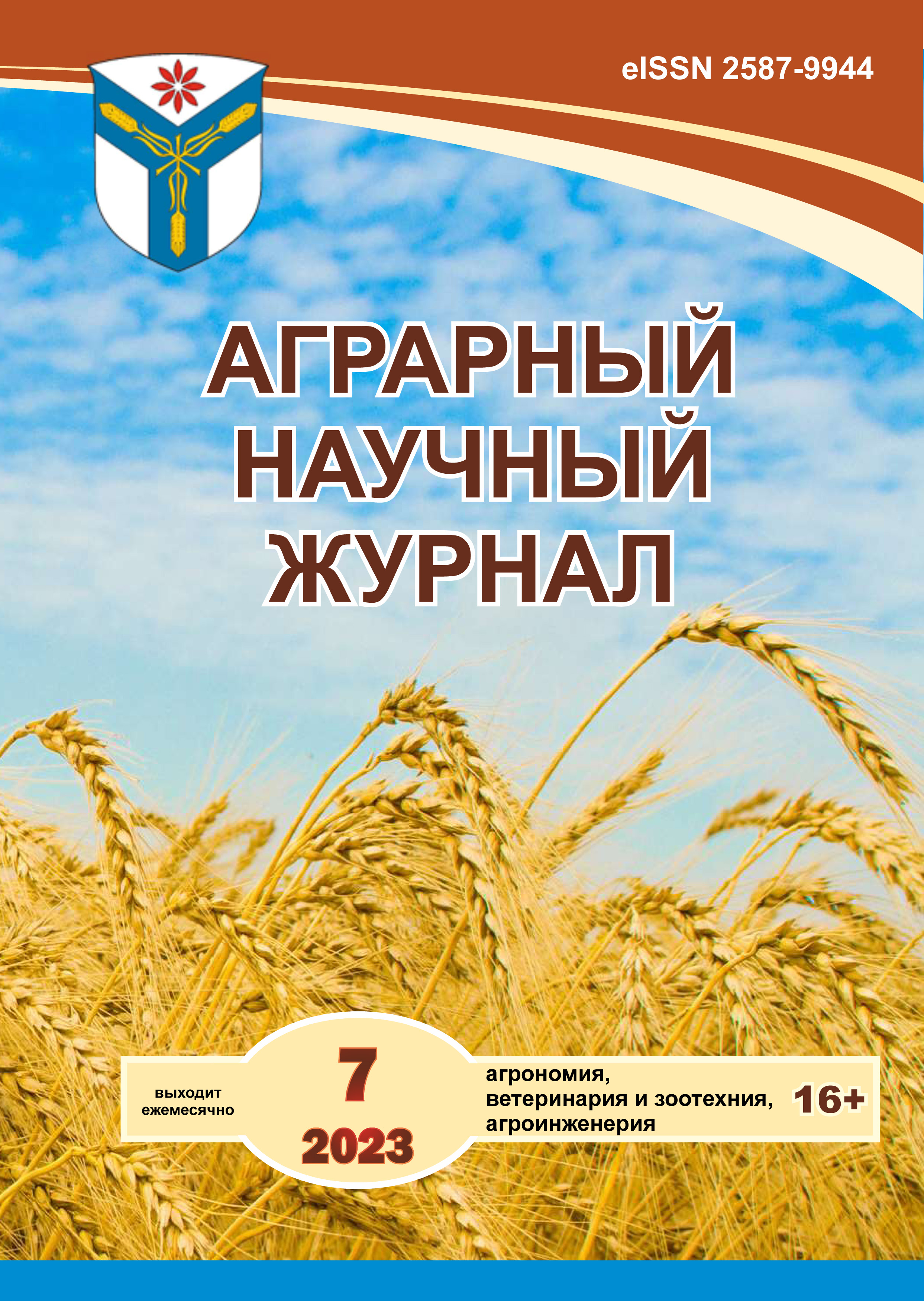Bread wheat breeding for functional nutrition products
DOI:
https://doi.org/10.28983/asj.y2023i7pp48-55Keywords:
wheat, purple grain, anthocyanins, antioxidant activity, bioflavonoids, functional foodsAbstract
In a world of rapid economic growth, food security from the point of view of the nutrition profile has become of increasing interest. The development of biofortified colored wheat (black, purple and blue) adds nutritional and functional health benefits to energy-rich wheat. Cultivars and lines of colored bread wheat with a high content of anthocyanins, iron and zinc exhibit antioxidant and anti-inflammatory activity and have desirable properties for production and commercial use. Anthocyanins contained in colored wheat have a wide range of health effects, such as protection from metabolic syndromes, obesity, diabetes, hypertension and dyslipidemia. The idea of production anthocyanin-enriched wheat shapes people's way of life, as it is the main food crop in many countries. The achievements of breeding new high-quality productive varieties of cereals, with a large amount of antioxidants, allow them to be used to obtain a number of products for functional nutrition. The presented review is a compilation of currently available information about colored wheat in the most important aspects, including biochemistry, food industry, nutrition, genetics, selection and its influence on human health. Market formation and consumer awareness raising are vital tasks for its use as a functional food product on a large scale.
Downloads
References
Фиолетовозерный сорт яровой мягкой пшеницы Надира / Н. З. Василова [и др.] // Зернобобовые и крупяные культуры. 2021. № 4. С. 66–75.
Гордеева Е. И. Генетическая регуляция фиолетовой окраски перикарпа зерна мягкой пшеницы: дис. … канд. биол. наук. Новосибирск, 2014. 121 с.
Обогащение пищевой продукции антоцианами за счет использования новых форм пшеницы с повышенным содержанием антоцианов / Е. И. Гордеева [и др.] // VII сьезд Вавиловского общества генетиков и селекционеров, посвящ. к 100-летию кафедры генетики СПБУ и Ассоциированные Симпозиумы. СПб., 2019. C. 843.
Калмыкова Е. В., Калмыкова О. В. Цельнозерновые продукты в современных технологиях хлебопекарной промышленности // Рациональное питание, пищевые добавки и биостимуляторы. 2016. № 1. С. 65–70.
Полонский В. И., Лоскутов И. Г., Сумина А. В., Селекция на содержание антиоксидантов в зерне как перспективное направление для получения продуктов здорового питания // Вавиловский журнал генетики и селекции. 2018. Т. 22(3). С. 343–352. DOI: 10.18699/VJ18.370.
Создание селекционного материала многолетней и фиолетовозерной яровой пшеницы для выведения сортов с высокой урожайностью, питательной ценностью зерна, пригодного для функционального питания, и экологичностью возделывания в регионах России // Отраслевая сеть инноваций в АПК; Министерство сельского хозяйства Российской Федерации; ФГБОУ-ВО-Омский-ГАУ // apknet.ru.
Функциональное питание – общая проблема «здорового образа жизни» населения государств Евразии // Научные статьи Х Евразийского науч. форума: сб. СПб.: Университет при МПА ЕврАзЭС, 2019. 189 с.
Маркер-контролируемое получение и производство форм пшеницы с повышенным уровнем биофлавоноидов: оценка продукции для обоснования значимости направления / Е. К. Хлесткина [и др.] // Вавиловский журнал генетики и селекции. 2017. № 5. С. 545–553. DOI: 10.18699/VJ17.25-o.
One-month strawberry-rich anthocyanin supplementation ameliorates cardiovascular risk, oxidative stress markers and platelet activation in humans / J. M. Alvarez-Suarez et al. // J Nutr Biochem. 2014. Vol. 25(3) P. 289–294. DOI: 10.1016/j.jnutbio.2013.11.002.
Dietary anthocyanins and health: data from Flora and Athena EU projects / C. Cerletti et al. // Br J Clin Pharmacol. 2016. Vol. 83(1) P.103–106. DOI: 10.1111/bcp.12943.
Rising demand for healthy foods-anthocyanin biofortified colored wheat is a new research trend / M. Garg et al. // Front. Nutr. 2022. Vol. 9. 878221.
The Strategy for Marker-Assisted Breeding of Anthocyanin-Rich Spring Bread Wheat (Triticum aestivum L.) Cultivars in Western Siberia / E. Gordeeva et al. // Agronomy. 2020. Vol. 10(10). P. 1603. DOI: 10.3390/agronomy10101603.
Purified anthocyanin supplementation reduces dyslipidemia, enhances antioxidant capacity, and prevents insulin resistance in diabetic patients / D. Li et al. // J Nutr. 2015. Vol. 145(4) P.742–748. DOI: 10.3945/jn.114.205674.
Effects of anthocyanins on the prevention and treatment of cancer / B. W. Lin et al. // Br J Pharmacol. 2017. Vol. 174(11) P. 1226–1243. DOI: 10.1111/bph.13627.
Loskutov I. G., Khlestkina E. K. Wheat, Barley and Oat Breeding for Health Benefit Components in Grain // Plants (Basel). 2021. Vol. 10(1). P. 86. DOI: 10.3390/plants10010086.
Catalogue of Gene Symbols for Wheat / R. A. McIntosh et al. // Proceedings of the 12th International Wheat Genetics Symposium, 8–13 September 2013. Yokohama, Japan.
Downloads
Published
Issue
Section
License
Copyright (c) 2023 The Agrarian Scientific Journal

This work is licensed under a Creative Commons Attribution-NonCommercial-NoDerivatives 4.0 International License.








